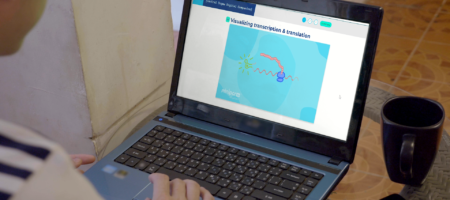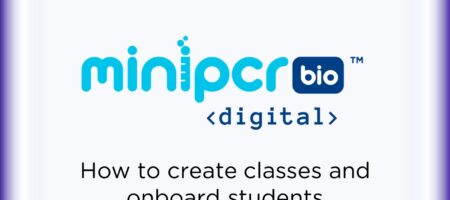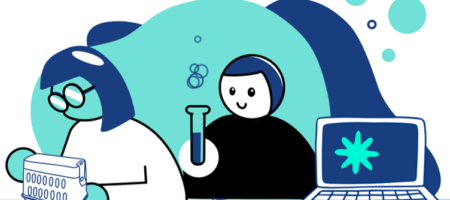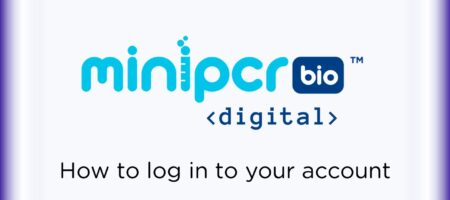What makes miniPCR Digital Labs different?

miniPCR Digital Labs have officially launched, offering an innovative approach to science education through interactive, narrative-driven simulations and integrated hands-on experiments.
Designed to engage students in molecular biology and biotechnology, these labs bring complex concepts to life in ways that are both accessible and exciting. Here, miniPCR Digital Initiatives Lead Katy Martin shares the inspiration behind the platform, what makes it unique, and how it’s changing the way students interact with science.
What inspired miniPCR to create an e-learning platform?
The modern classroom is digital. Teachers rely on a range of digital tools to streamline instruction, so we wanted to meet them where they are. Our new Digital Labs are designed to offer a more sophisticated way to deliver our curriculum in a format that aligns with today’s classrooms.
Accessibility is also at the heart of this initiative. Offering fully virtual simulations puts our labs within reach of resource-constrained classrooms and supports our overarching goal of making science accessible to everyone, everywhere.
What makes miniPCR Digital labs different from other science education tools?
Many online biology labs operate like video games, where students manipulate tools in a simulated lab environment. These can be great for users without access to a physical lab, but we wanted to offer something different. Our Digital Labs emphasize the conceptual over the mechanical. We want students to see how each step of a biotechnology experiment brings them closer to answering a scientific question. This approach leaves them better equipped to apply these tools to new problems in the future.
What are some of the key features of miniPCR Digital that users find most engaging or beneficial?
- Storylines: Whether students are hunting down dangerous bacteria on the International Space Station or genotyping a simulated class of students, every Digital Lab is anchored to a specific experiment that has its own narrative. We use videos to build these narratives and propel students through the investigation. Our hope is that this helps students build a connection with material that might otherwise feel abstract and inaccessible.
- Student agency: Where possible, we give students the opportunity to take ownership of an experiment in some small way. In the Microbe Hunters Digital Lab, for example, students select the International Space Station modules they’d like to sample for dangerous bacteria. Their selection directly influences their experimental results, adding a layer of consequence and engagement to the experience.
- Real experimental results: Every Digital Lab includes videos or photos of a successful reference experiment. This means the opportunity to analyze results is not dependent on a student’s ability to obtain clear results—which can honestly be hard for students who are still building skills in the lab!
- Hands-on integration: Many of the teachers we talk to say that there is no replacement for hands-on experimentation. So in addition to fully virtual lab simulations, we offer Lab Companions – digital resources that guide students through one of our hands-on labs. Lab Companions give teachers a way to seamlessly integrate their lab manual with autograded assessment and easy progress monitoring.
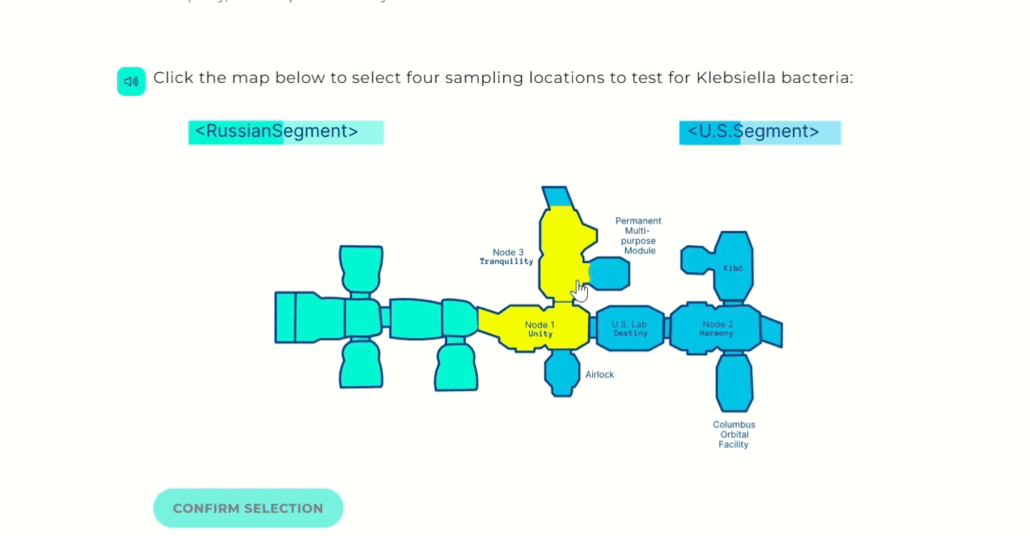
Why is the combination of narrative-driven simulations and hands-on experimentation important for student engagement and learning?
Digital tools like our narrative-driven simulations offer something unique: they let students explore the “why” before tackling the “how”. Students can focus on understanding experimental design, making predictions, and analyzing results without the pressure of executing technical steps perfectly. If and when they move on to hands-on experimentation, they do so with a clearer sense of purpose.
Lastly, what excites you most about the future of miniPCR Digital and its role in revolutionizing science education?
Molecular biology and genetics can be tough for students in part because they’re hard to visualize. miniPCR has long focused on overcoming that barrier—whether that means using BioBits and the P51 fluorescence viewer to watch transcription and translation in real time or using a blueGel to watch DNA samples separate during an electrophoresis experiment. With miniPCR Digital, we feel like we have a whole new toolkit to help make biology more visible, more accessible, and more interactive for students.
As we roll out our labs, we’re eager to hear our users’ ideas on how we can continue to use digital tools to make tricky concepts more accessible, engaging, and impactful in the classroom and beyond!
Related resources:

